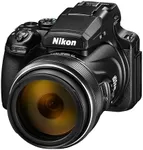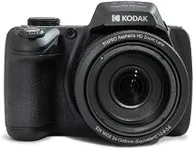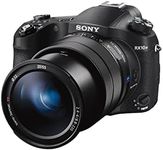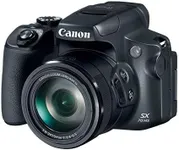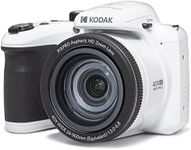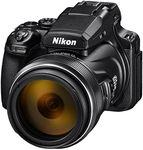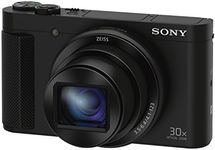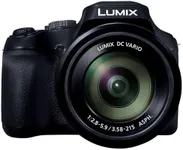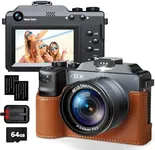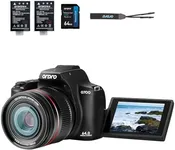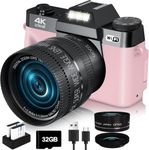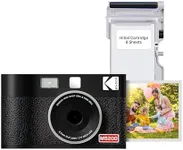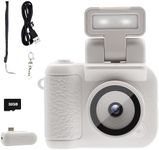Buying Guide for the Best Bridge Cameras
Bridge cameras are a versatile option for photographers who want more control and features than a point-and-shoot camera but aren't ready to invest in a DSLR or mirrorless system. They are called 'bridge' cameras because they bridge the gap between simple compact cameras and more complex interchangeable lens cameras. When choosing a bridge camera, it's important to consider several key specifications to ensure you get the best fit for your needs. Understanding these specs will help you make an informed decision and find a camera that suits your photography style and requirements.Sensor SizeThe sensor size in a bridge camera determines the quality of the images it can produce. Larger sensors generally capture more light, resulting in better image quality, especially in low-light conditions. Common sensor sizes in bridge cameras include 1/2.3-inch, 1-inch, and APS-C. A 1/2.3-inch sensor is typical for entry-level models and is suitable for casual photography. A 1-inch sensor offers a good balance between image quality and portability, making it ideal for enthusiasts. APS-C sensors are larger and provide superior image quality, making them suitable for more serious photographers who want to capture high-detail images.
Zoom RangeThe zoom range of a bridge camera is one of its most attractive features, allowing you to capture subjects from a distance without changing lenses. Zoom range is usually expressed in terms of optical zoom, such as 20x, 30x, or even 60x. A higher zoom range means you can get closer to distant subjects, which is great for wildlife or sports photography. However, higher zoom ranges can also make the camera bulkier and harder to stabilize. If you plan to shoot a variety of subjects, a moderate zoom range (20x to 30x) might be sufficient. For specialized needs like bird watching or distant landscapes, a higher zoom range (40x and above) would be more appropriate.
Aperture RangeThe aperture range of a bridge camera affects how much light the lens can let in and how much control you have over depth of field. A wider aperture (lower f-number) allows more light to enter, which is beneficial for low-light conditions and achieving a blurred background effect. Typical aperture ranges in bridge cameras might be f/2.8 to f/5.6. If you often shoot in low light or want more creative control over your images, look for a camera with a wider maximum aperture (e.g., f/2.8). For general photography, a standard aperture range will suffice.
Image StabilizationImage stabilization is a crucial feature in bridge cameras, especially when using high zoom levels or shooting in low light. It helps reduce the blur caused by camera shake, resulting in sharper images. There are two main types of image stabilization: optical and digital. Optical stabilization is generally more effective as it physically adjusts the lens or sensor to counteract movement. Digital stabilization uses software to reduce blur but can sometimes degrade image quality. If you plan to shoot handheld or in challenging conditions, prioritize a camera with good optical image stabilization.
Viewfinder and LCD ScreenThe viewfinder and LCD screen are important for composing and reviewing your shots. Bridge cameras may have electronic viewfinders (EVFs) and/or LCD screens. An EVF can be very useful in bright conditions where an LCD screen might be hard to see. Look for a high-resolution EVF for a clearer and more detailed view. The LCD screen should be large and bright, with a resolution that allows you to see fine details. Some screens are also tiltable or fully articulating, which can be helpful for shooting at awkward angles. If you often shoot in bright sunlight or need to compose shots from various angles, these features will be particularly beneficial.
Manual ControlsManual controls give you more creative freedom by allowing you to adjust settings like shutter speed, aperture, and ISO. This is important for photographers who want to experiment with different techniques and have more control over their images. Bridge cameras vary in the extent of manual controls they offer. Some have full manual modes, while others offer limited adjustments. If you are a beginner, you might start with a camera that offers both automatic and manual modes, so you can learn and grow. For more experienced photographers, a camera with extensive manual controls will be more satisfying.
Video CapabilitiesMany bridge cameras offer video recording capabilities, which can be a great addition if you want to capture both stills and motion. Key specs to consider include resolution (such as Full HD or 4K), frame rates, and additional features like slow motion or time-lapse. Higher resolution and frame rates provide better video quality and smoother motion. If video is a significant part of your photography, look for a camera with robust video features. For casual video recording, standard Full HD resolution will be sufficient.
Battery LifeBattery life is an important consideration, especially if you plan to use your camera for extended periods or in situations where recharging might not be convenient. Battery life is usually measured in the number of shots per charge. Bridge cameras can vary widely in this regard, with some offering a few hundred shots per charge and others providing over a thousand. If you often shoot long sessions or travel frequently, look for a camera with longer battery life or consider carrying spare batteries.

